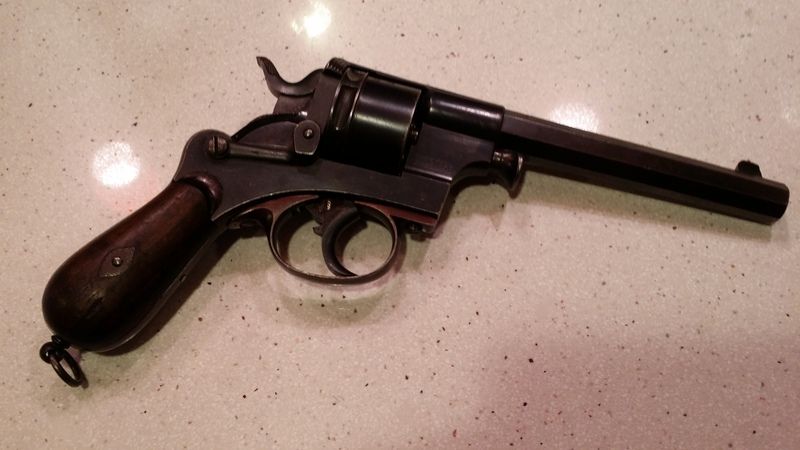I recently acquired 2 Dutch revolvers both chambered in 9.4mm. I got a set of dies from Buffalo Arms (CH4D) and a mold from Accurate Molds (Thank you Tom). I formed 200 pieces of brass by cutting down Starline .41 Magnum brass and then just sizing it. Very easy. However, when I actually got around to loading it got a bit tricky. I thought that having the correct dies for once would make the loading process easy, not so. I cast the boolit out of soft lead and it dropped out of the mold at .383 and I sized it to .381 (groove diameter on both revolvers was .380). After I sized the brass I found that the boolit could be pushed into the case mouth with just thumb pressure and if not careful would just go fully into the case. Certainly no expansion necessary. Luckily over 14 grains of Goex 3F the powder served as a stop for the boolit. A small charge of smokeless would have allowed the boolit to drop into the case. When I tried to use the seating die to seat the boolit and compress the load a bit the boolit would stick in the die body. Even when I removed the lock ring and screwed the seating plug all the way down it still persisted no matter how much I backed everything off. I played around with the dies for quite a while and finally just said screw it and went my usual route of using what I had on hand after thinking the problem through. Below is what I came up with and it works perfectly. The finished rounds load and shoot great.
1. Run the brass into the 9.4mm sizing die and seat large magnum pistol primer.
2. Next use .40 S&W Lee powder through expander die with funnel, no expansion only a convenient way to get the powder into the case.
3. To seat the bullet I used a Lee .40 S&W seating die backed off as far as possible with the seating plug dialed all the way down. This just pushed the boolit down and it got slight compression that I needed.
4. The boolit now being seated to the crimping groove I ran it up into a Lee .38 S&W sizing die sans decapping pin. I did this part by feel. I could actually feel a mild pop as the case mouth just kissed the sizing die. Very slight pressure.
Again, this method produced great rounds that shoot perfectly. A little bit disappointed that I invested in the die set. I probably could have cooked up a different way to size the cut down .41 Magnum brass or have just ordered a sizing die alone. I fiddle around with so many obsolete cartridges. It felt easy to just buy the right dies and a correct boolit mold. Ah well, I will just add the 9.4mm dies to my collection and will probably use one of them for some other unrelated project in the future.
The 2 revolvers. Both in practically mint condition.


|
   
   
|


|





 Reply With Quote
Reply With Quote








